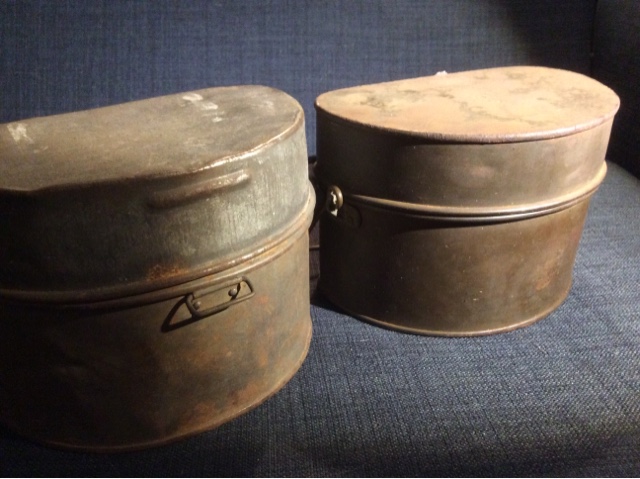I am curious of one thing, however. There seems to be an indication that there was once a rim attached to the edge of the helmet because there is a paint build-up around the perimeter of the helmet. On the other hand the original paint seems also to touch the edge beyond that line. I'm left wondering if an original rim fell off shortly after issue when the helmet was then painted in the trenches with the sand finish.
There are no dates but the lot number of the steel used in the pressing is only 22 which must give it a very early dating. Does anyone have any insights into this?
Also of interest is the painting of a date and, possibly, a place, underneath the brim. Too much paint has been lost for me to be able to read the writing.

















































